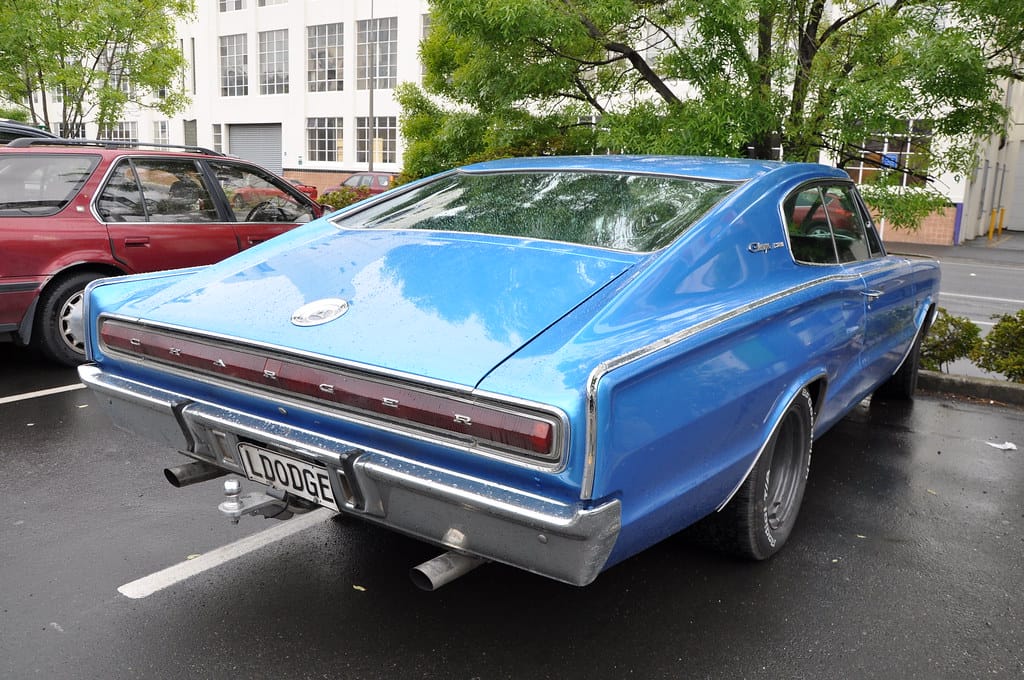
The American muscle car, a potent symbol of raw power and unbridled freedom, truly roared into prominence during the dynamic decades of the 1960s and 1970s. These high-performance vehicles, easily identifiable by their massive engines and aggressive designs, weren’t just cars; they were an exhilarating driving experience that perfectly encapsulated the vibrant spirit of American automotive culture. Legendary brands such as Ford, Chevrolet, and Dodge became household names, consistently delivering models that would ultimately define a generation and ignite a passionate, enduring love affair with pure speed and thrilling performance.
However, the very characteristics that propelled muscle cars into their glorious heyday also inadvertently laid the groundwork for their eventual decline. The tumultuous oil crises of the 1970s, coupled with increasingly stringent emissions regulations and a noticeable shift in consumer preferences towards greater fuel efficiency and practicality, compelled manufacturers to fundamentally re-evaluate their entire approach to automotive design. As pressing concerns for safety and environmental impact began to take precedence, the once-deafening roars of muscle car engines were gradually, almost mournfully, silenced, initiating a dramatic and irreversible transformation in the automotive landscape.
This article invites you on an immersive journey through the intricate and often dramatic history of these American muscle cars. We’ll explore their meteoric ascent during a golden age of automotive innovation and then delve into the multifaceted challenges that inexorably led to their decline. We’ll shine a spotlight on some of the most memorable machines that, despite their brilliance, ultimately faded as the times changed, proving that even the mightiest can be swept away by the currents of history.
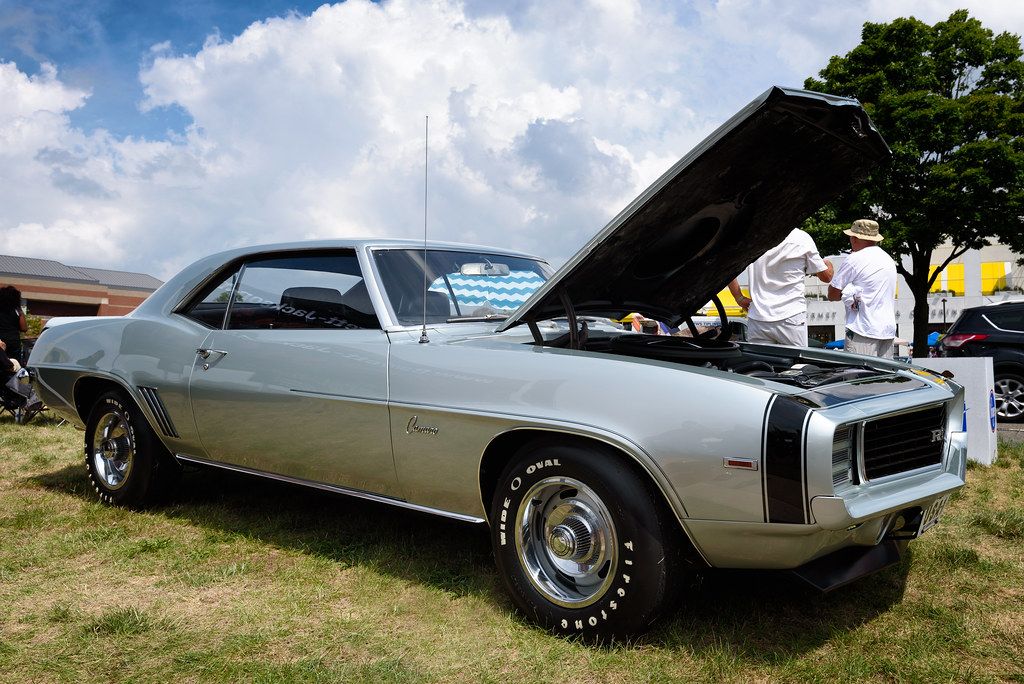
1. **1969 Chevrolet Camaro ZL1**The 1969 Chevrolet Camaro ZL1 represents the extreme pursuit of performance during muscle car’s golden age. Born from Chevrolet’s COPO program, it was specifically designed for drag racing. Its very existence spoke of purpose-built speed, far beyond typical production vehicles.
Under its hood, an all-aluminum 427-cubic-inch V8 engine was officially rated at 430 horsepower. However, insiders knew its true output was far greater. This specialized engine made the ZL1 an absolute powerhouse on the strip, capable of astonishing quarter-mile times and solidifying its status as a drag-racing titan.
This raw performance and exclusivity came at a steep cost. Only 69 units were built, making it incredibly rare. Its $7,200 price tag in 1969, equivalent to over $55,000 today, made it a difficult sell. This prohibitive cost, coupled with its raw, track-focused nature and punishing insurance costs, kept buyers away.
The ZL1 remained street-legal, but its destiny was often the race track. Its limited production, high price, brutal insurance rates, and uncompromising performance made it a legend. It faded not because it wasn’t great, but because the times changed, underscoring its unique place in automotive history.
Car Model Information: 2023 Chevrolet Camaro 1LS
Name: Chevrolet Camaro
Manufacturer: Chevrolet
Production: 1966–2002,2009–2023
ModelYears: 1967–2002,2010–2024
Class: Pony car
BodyStyle: coupe,convertible
Platform: GM F platform,GM Zeta platform,GM Alpha platform
Layout: Front-engine, rear-wheel-drive layout
Categories: 1970s cars, 1980s cars, 1990s cars, 2+2 coupés, 2000s cars
Summary: The Chevrolet Camaro is a mid-size American automobile manufactured by Chevrolet, classified as a pony car. It first went on sale on September 29, 1966, for the 1967 model year and was designed to compete with the Ford Mustang. The Camaro shared its platform and major components with the Firebird, produced by General Motors’ Pontiac division that was also introduced for the 1967 model year.
Four distinct generations of the Camaro were developed before production ended in 2002. The nameplate was revived on a concept car that evolved into the fifth-generation Camaro; production started on March 16, 2009.
Production of the sixth generation of the Camaro ended in December 2023, for the 2024 model year.
Get more information about: Chevrolet Camaro
Buying a high-performing used car >>>
Brand: Chevrolet Model: Camaro
Price: $23,965 Mileage: 36,667 mi.
Read more about: Unleashing American Thunder: The 13 Most Iconic Muscle Cars Ever Built for Speed Enthusiasts

2. **1970 Plymouth Hemi ‘Cuda**The 1970 Plymouth Hemi ‘Cuda truly embodied the muscle car ethos: audacious power and an intimidating presence. At its heart was Chrysler’s legendary 426-cubic-inch Hemi V8, an engine revered for immense power. It delivered a factory-rated 425 horsepower, a figure often considered conservative by those who pushed its limits.
This ‘Cuda translated power into astonishing real-world performance, tearing down the quarter-mile in under 14 seconds. This feat established it as one of the fastest production cars of its time. It was a pure muscle statement piece, a feared sight at a stoplight, daring anyone to challenge its dominance.
As the muscle car era faced headwinds, even the mighty Hemi ‘Cuda felt the pressure. Insurance premiums on high-performance vehicles soared, making ownership significantly more expensive. Simultaneously, tightening emissions standards began to cast a long shadow over big engines.
These regulations effectively made the large Hemi engine a liability. Plymouth dropped the Hemi after 1971, ending one of the most feared street cars of its era. Its discontinuation highlighted changing times, where unadulterated power was no longer the sole driving force in the market.
Car Model Information: 2021 Volkswagen Tiguan 2.0T SE R-Line Black
Caption: 1970 Hardtop Coupe
Name: Plymouth Barracuda
Manufacturer: Plymouth (automobile)
Production: 1964–1974
Assembly: Fenton, Missouri,Hamtramck, Michigan,Maywood, California,Windsor, Ontario
Layout: Front-engine, rear-wheel drive layout
Class: Pony car
Categories: 1970s cars, All articles with dead external links, All articles with unsourced statements, Articles with dead external links from February 2018, Articles with dead external links from January 2022
Summary: The Plymouth Barracuda is a two-door pony car that was manufactured by Chrysler Corporation from 1964 through 1974 model years.
The first-generation Barracuda was based on the Chrysler A-body and was offered from 1964 until 1966. A two-door hardtop (no B-pillar) fastback design, it shared a great majority of parts and bodywork with the Plymouth Valiant, except for the distinctive wraparound rear glass.
The second-generation Barracuda, though still Valiant-based, was heavily redesigned. Built from 1967 through 1969, it was available as a two-door in fastback, notchback, and convertible versions.
The third generation, offered from 1970 until 1974, was based on the Chrysler E-body, exclusive to it, and the slightly larger Dodge Challenger. A completely new design, the two-door Barracuda was available in hardtop and convertible body styles.
Get more information about: Plymouth Barracuda
Buying a high-performing used car >>>
Brand: Plymouth Model: Hemi ‘Cuda
Price: $16,773 Mileage: 68,625 mi.
Read more about: Unleashing Raw Power: 14 Legendary 1970s Muscle Cars Every Enthusiast Needs to Know
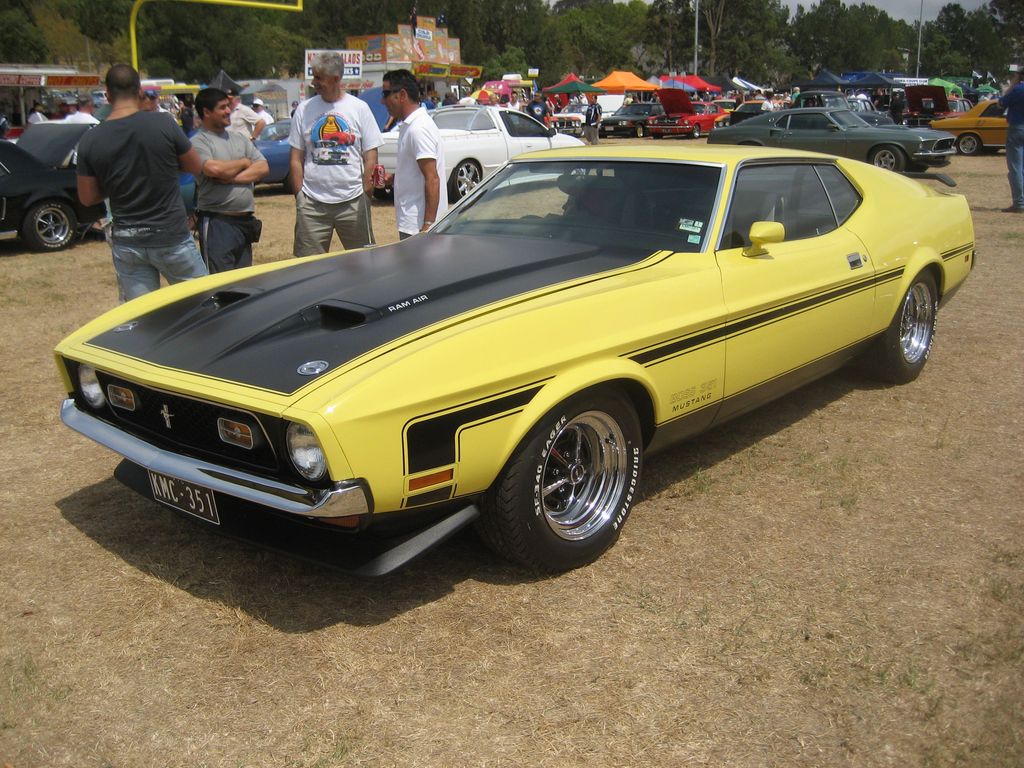
3. **1971 Ford Mustang Boss 351**The 1971 Ford Mustang Boss 351 was a true one-year wonder, a potent distillation of Ford’s performance delivered just as the automotive landscape shifted. It was powered by the high-output 351 Cleveland V8, generating 330 horsepower. This offered a sharp balance of raw power for straight-line acceleration and agile handling for its class.
The Boss 351 exemplified performance efficiency within the Mustang lineage, showing how a smaller big-block could still deliver a knockout punch. Its sophisticated engine design and tuning made it a favorite among those who appreciated a refined, yet visceral, driving experience. It was about intelligently applied power, distinguishing it from more single-minded rivals.
Tragically, its fleeting existence coincided with significant market pressures. Emissions standards tightened, demanding cleaner engines and restrictive designs. Concurrently, insurance surcharges on high-performance vehicles climbed, making ownership increasingly burdensome.
These converging forces squeezed the performance market, impacting both affordability and engineering possibilities. The regulatory environment mandated changes resulting in power reduction, while economic factors made these cars less attractive. While the “Boss” name returned, it never again captured the raw punch of the 1971 Boss 351, marking a performance peak before the era’s decline.
Car Model Information: 2021 Volkswagen Tiguan 2.0T SE R-Line Black
Name: Mustang (first generation)
Caption: 1965 Ford Mustang
Aka: Ford T5 (Germany)
Manufacturer: Ford Motor Company
Assembly: Unbulleted list
Production: March 1964 – June 1973
ModelYears: 1965–1973
Class: Unbulleted list
BodyStyle: Unbulleted list
Layout: Front-engine, rear-wheel drive layout
Designer: Gale Halderman
Related: Unbulleted list
Successor: Ford Mustang (second generation)
Categories: 1970s cars, All Wikipedia articles written in American English, All articles with unsourced statements, Articles with short description, Articles with unsourced statements from January 2020
Summary: The first-generation Ford Mustang was manufactured by Ford from March 1964 until 1973. The introduction of the Mustang created a new class of automobiles known as pony cars. The Mustang’s styling, with its long hood and short deck, proved wildly popular and inspired a host of competition.
It was introduced on April 17, 1964, as a hardtop and convertible, with the fastback version following in August 1964. Upon introduction, the Mustang, sharing its platform with the Falcon, was slotted into the compact car segment.
The first-generation Mustangs grew in overall dimensions and engine power with each revision. The 1971 model featured a drastic redesign. After an initial surge, sales steadily declined, and Ford began working on a new generation Mustang. With the onset of the 1973 oil crisis, Ford was prepared, having already designed the smaller Mustang II for the 1974 model year. This new car shared no components with preceding models.
Get more information about: Ford Mustang (first generation)
Buying a high-performing used car >>>
Brand: Ford Model: Mustang Boss 351
Price: $16,773 Mileage: 68,625 mi.
Read more about: Unleashing Raw Power: 14 Legendary 1970s Muscle Cars Every Enthusiast Needs to Know
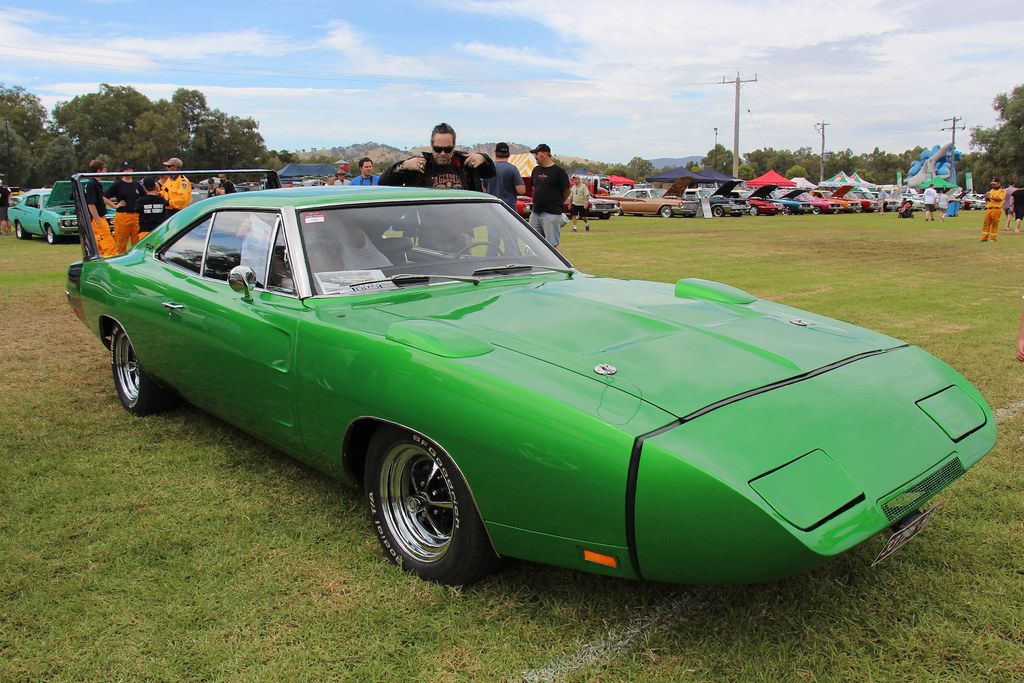
4. **1969 Dodge Charger Daytona**The 1969 Dodge Charger Daytona is an undeniable icon, extreme in design and purpose. Built to dominate NASCAR superspeedways, its appearance was radical. The pointed nose cone and colossal rear wing were meticulously engineered, wind-cheating tools designed for speed and immense downforce.
Beneath its aerodynamic exterior, the Daytona packed serious firepower. Available with either the robust 440 Magnum or legendary 426 Hemi engine, it was unbeatable on high-banked oval tracks. Its incredible straight-line speed and stability, from its aero package and powerful drivetrain, shattered records and left competitors behind.
The Daytona’s unparalleled success, however, also spelled its undoing on the track. NASCAR, witnessing the dominance of these “aero cars,” implemented rule changes for 1971. These effectively outlawed the extreme aerodynamic modifications, abruptly ending the intense “aero-war era” in stock car racing.
While street versions were sold for homologation, production numbers were incredibly low, only about 500 units. This made them among the rarest Mopar muscle cars. Their scarcity, due to cost and extreme race-bred nature, cemented their status as specialized machines, illustrating how even dominant cars could be rendered obsolete by shifting regulations.
Car Model Information: 2021 Volkswagen Tiguan 2.0T SE R-Line Black
Name: Dodge Charger Daytona
Caption: 1969 Dodge Charger Daytona
Manufacturer: Dodge
Production: 1969–1970,2006–2009,2013,2017–2023
Class: Muscle car
Layout: FR layout
Categories: 1960s cars, 1970s cars, 2000s cars, All articles needing additional references, All articles with unsourced statements
Summary: Dodge produced three separate models with the name Dodge Charger Daytona, all of which were modified Dodge Chargers. The name was taken from Daytona Beach, Florida, which was an early center for auto racing and still hosts the Daytona 500, NASCAR’s premier event. The original Dodge Charger Daytona was designed to beat the competition in NASCAR racing. It was the first NASCAR vehicle to reach 200 miles per hour, which was a major milestone at the time.
The first use of the ‘Daytona’ name for a car was on a version of the Studebaker Lark. The Daytona was the performance model of the compact Lark, and it was produced during the 1960s.
Get more information about: Dodge Charger Daytona
Buying a high-performing used car >>>
Brand: Dodge Model: Charger Daytona
Price: $16,773 Mileage: 68,625 mi.
Read more about: Unleashing the Legends: The 15 Most Valuable 1970s Cars Commanding Top Dollar Today
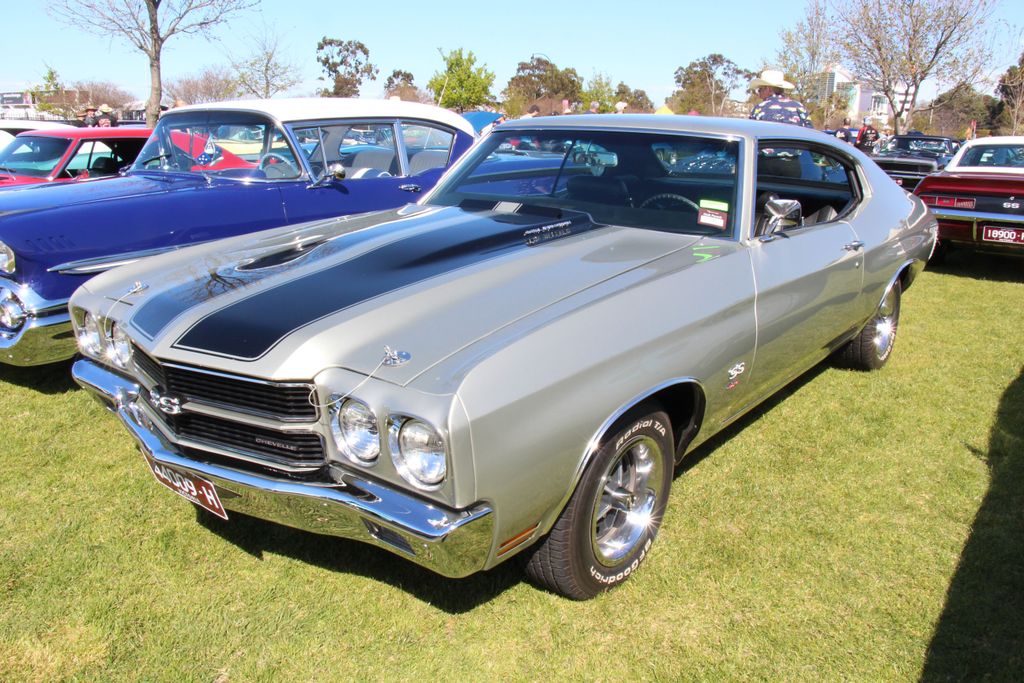
5. **1970 Chevrolet Chevelle SS 454 LS6**The 1970 Chevrolet Chevelle SS 454 LS6 stands as one of the most formidable muscle cars, practically a factory-built drag car delivered to the showroom. This beast was propelled by a massive 454-cubic-inch big-block engine, generating an astounding 450 horsepower. This raw power translated into incredible performance metrics few other production cars could match.
The LS6 Chevelle was renowned for devastating the quarter-mile, consistently achieving times in the low 13s on street tires. This capability made it an instant sensation among enthusiasts and a formidable contender at drag strips. It embodied the ultimate expression of Chevrolet’s commitment to pure, straight-line speed.
However, its reign as a dominant force was tragically short-lived, essentially a one-year phenomenon. Its immense power came with rapidly increasing challenges. High insurance rates, targeting powerful cars and associated risks, made ownership increasingly prohibitive, creating a significant barrier.
More critically, new emissions rules began to impact engine design. Regulations mandated changes, often resulting in reduced compression ratios and lower horsepower figures. By 1971, compression ratios dropped, and horsepower ratings across the Chevelle lineup followed suit. The LS6 remains a benchmark of muscle car performance, a vivid snapshot of the era’s peak before its rapid end.
Car Model Information: 2021 Volkswagen Tiguan 2.0T SE R-Line Black
Name: Chevrolet Chevelle
Caption: 1970 Chevrolet Chevelle SS 396 Sport Coupe
Manufacturer: Chevrolet
Production: 1963–1977
ModelYears: 1964–1977
Class: Mid-size
Platform: GM A platform (RWD)
Layout: FR layout
Successor: Chevrolet Malibu
Categories: 1970s cars, All articles needing additional references, All articles that may contain original research, All articles with specifically marked weasel-worded phrases, All articles with unsourced statements
Summary: The Chevrolet Chevelle is a mid-sized automobile that was produced by the Chevrolet division of General Motors (GM) in three generations for the 1964 to 1977 model years. Part of the GM A-body platform, the Chevelle was one of Chevrolet’s most successful nameplates. Body styles included coupes, sedans, convertibles, and station wagons. The “Super Sport” versions were produced through the 1973 model year and Lagunas from 1973 through to 1976.
After a four-year absence, the El Camino was reintroduced as part of the new Chevelle lineup in 1964.
From 1964 to 1969, GM of Canada sold a modified version of the Chevelle that included a Pontiac-style grille, and a LeMans instrument panel, marketed as the Beaumont.
The Malibu was the top-of-the-line model to 1972, and completely replaced the Chevelle nameplate starting with the redesigned, and downsized 1978 model year.
Get more information about: Chevrolet Chevelle
Buying a high-performing used car >>>
Brand: Chevrolet Model: Chevelle SS 454 LS6
Price: $16,773 Mileage: 68,625 mi.
Read more about: Unleashing Raw Power: 14 Legendary 1970s Muscle Cars Every Enthusiast Needs to Know
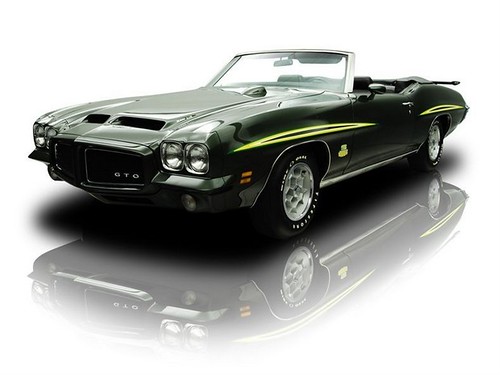
6. **1971 Pontiac GTO Judge**The 1971 Pontiac GTO Judge made a bold statement, embodying Pontiac’s attempt to keep the muscle car fire burning amidst a changing landscape. Equipped with Pontiac’s formidable 455 HO V8, it delivered 335 horsepower and massive torque, ensuring its potency on the street. Its aggressive stance, bold graphics, and performance reputation solidified its status as a street star.
The Judge package, introduced in 1969, aimed for an affordable, yet striking, performance option. By 1971, it still carried that distinct flair, appealing to those craving power and personality. It was a vehicle unafraid to be seen or heard, encapsulating the rebellious spirit of the muscle car era, even as it neared its twilight.
However, market trends were shifting. Rising insurance surcharges made high-performance machines a luxury many couldn’t afford. Insurance companies, wary of powerful vehicles, passed costs directly to consumers via elevated premiums.
Compounding these pressures were new emissions requirements, forcing automakers to detune engines. This meant a gradual diminishment of raw power. Ultimately, these factors spelled the end for the Judge after the 1971 model year, marking a significant milestone in the decline of the muscle car golden age. Despite its short run, it remains one of Pontiac’s most collectible muscle cars.
Car Model Information: 2021 Volkswagen Tiguan 2.0T SE R-Line Black
Name: Pontiac GTO
Caption: 2005 Pontiac GTO
Manufacturer: Pontiac (automobile),Holden
Class: Mid-size car,Compact car,Mid-size car
Production: 1963–1974,2003–2006
Predecessor: Pontiac Tempest
Layout: Front-engine, rear-wheel-drive layout
ModelYears: 1964-1974 2004-2006
Categories: 1970s cars, 2000s cars, All articles with unsourced statements, Articles with short description, Articles with unsourced statements from October 2008
Summary: The Pontiac GTO is a front-engine, rear-drive, two-door, and four-passenger automobile manufactured and marketed by the Pontiac division of General Motors over four generations from 1963 until 1974 in the United States — with a fifth generation made by GM’s Australian subsidiary, Holden, for the 2004 through 2006 model years.
The first generation of the GTO is credited with popularizing the muscle car market segment in the 1960s. Some consider the Pontiac GTO to have started the trend with all four domestic automakers offering a variety of competing models.
For the 1964 and 1965 model years, the GTO was an optional package on the intermediate-sized Pontiac LeMans. The 1964 GTO vehicle identification number (VIN) started with 22, while the 1965 GTO VIN began with 237. The GTO was designated as a separate Pontiac model from 1966 through 1971 (VIN 242…). It became an optional package again for the 1972 and 1973 intermediate LeMans. For 1974, the GTO was an optional trim package on the compact-sized Ventura.
The GTO model was revived for the 2004 through 2006 model years as a captive import for Pontiac, a left-hand drive version of the Holden Monaro, itself a coupé variant of the Holden Commodore.
Get more information about: Pontiac GTO
Buying a high-performing used car >>>
Brand: Pontiac Model: GTO Judge
Price: $16,773 Mileage: 68,625 mi.
Read more about: Unleashing Raw Power: 14 Legendary 1970s Muscle Cars Every Enthusiast Needs to Know
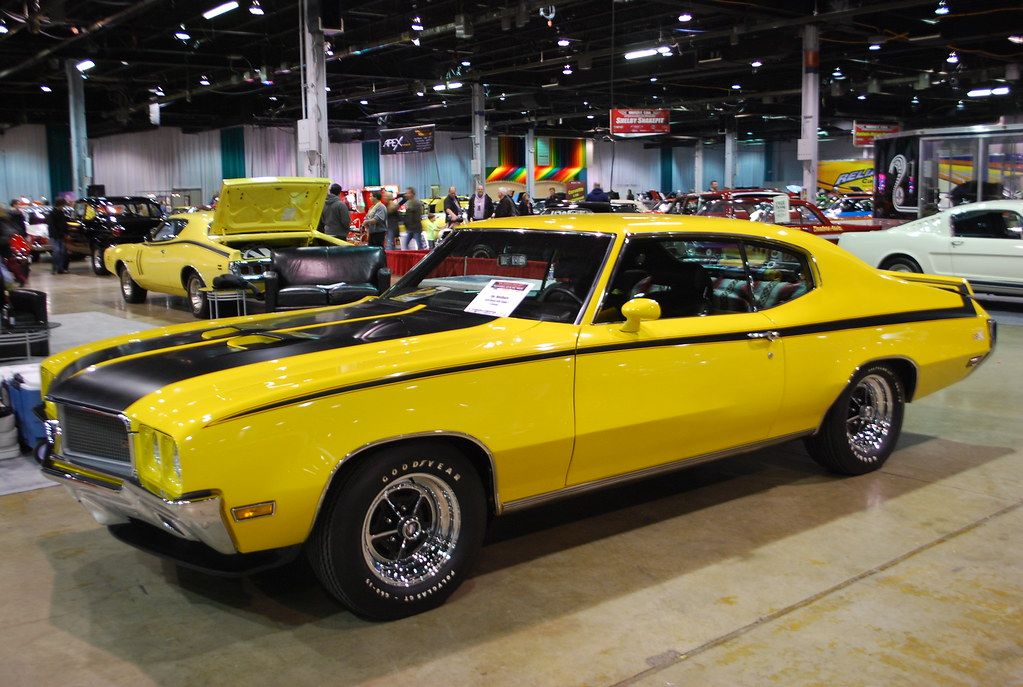
7. **1970 Buick GSX Stage 1**The 1970 Buick GSX Stage 1 was a true sleeper in the muscle car arena, blending Buick’s traditional luxury with ferocious performance. Under its stylish exterior resided a potent 455-cubic-inch engine. Officially rated at 360 horsepower, this engine was famously underrated, known for producing a colossal mountain of torque, often exceeding 500 lb-ft.
This incredible torque was the GSX Stage 1’s secret weapon, enabling astonishing acceleration. Despite Buick’s luxury image, the GSX Stage 1 was often quicker than many overtly performance-oriented rivals. It was the “linebacker in a tuxedo,” offering brute force and surprising refinement like air conditioning.
However, even Buick’s formidable muscle flagship had a short life. Challenges of the early 1970s eroded the viability of high-performance, large-displacement vehicles. Rising gas prices, a premonition of the 1973 oil crisis, made gas-guzzling machines less appealing to consumers concerned with economy.
Furthermore, tightening emissions regulations made it harder to justify powerful models. The balance between luxury, performance, and compliance became difficult, forcing Buick to reconsider its performance segment. The GSX Stage 1 became a short-lived legend, a reminder that even exceptional muscle cars succumbed to economic and regulatory forces.
Car Model Information: 2021 Volkswagen Tiguan 2.0T SE R-Line Black
Name: Gran Sport
Logo: Buick gs emblem.png
Producttype: Performance car
Currentowner: General Motors
Producedby: General Motors
Introduced: [object Object]
Related: T-Type
Markets: U.S.
Categories: All Wikipedia articles in need of updating, All articles with unsourced statements, Articles with short description, Articles with unsourced statements from September 2020, Articles with unsourced statements from September 2025
Summary: The Gran Sport name has been used on several high-performance cars built by General Motors for its Buick brand since 1965. In the GM brands hierarchy, Buick was surpassed in luxury and comfort appointments only by Cadillac, which did not produce performance models. As a result, the Buick GS series were the most opulently equipped GM sport models of their era.
The Gran Sport performance enhancements on all Buick products during this era sought to affirm Buick’s tradition of producing powerful and comfortable products going back to the 1930s when all Buicks of the time were upgraded to the Buick Fireball Straight Eight, then installed the 278 cu in (4.6 L) Roadmaster engine in the shortest model Special and introduced the Century, known as “the banker’s hot rod” with a three speed synchromesh manual transmission. The Gran Sport sought to identify cars that were fun to drive with a luxury approach.
Get more information about: Buick Gran Sport
Buying a high-performing used car >>>
Brand: Buick Model: GSX Stage 1
Price: $16,773 Mileage: 68,625 mi.
Read more about: Unleashing Raw Power: 14 Legendary 1970s Muscle Cars Every Enthusiast Needs to Know

8. **1973 AMC Javelin AMX**This car really exemplified AMC’s unique approach to the muscle car formula, offering something truly different from the Big Three. With its distinct styling and a potent 401-cubic-inch V8 engine, the Javelin AMX managed to carve out its own niche, holding its own surprisingly well against Detroit’s more established players. It was a testament to AMC’s ability to inject serious performance into their vehicles.
However, as the calendar turned to 1973, the Javelin AMX, like many of its muscle car brethren, found itself in an increasingly hostile environment. The looming oil crisis and the tightening grip of emissions laws began to fundamentally shift automotive priorities. Suddenly, brute force alone wasn’t enough; efficiency and environmental compliance became paramount.
Despite these mounting pressures, the Javelin line heroically managed to survive until 1974. But by then, the golden era’s momentum for pure, unadulterated muscle cars had undeniably dissipated. Today, the 1973 AMC Javelin AMX stands as a fascinating choice for collectors who appreciate its distinctive character and are eager to own a piece of muscle car history that dared to be different. It’s a compelling reminder that innovation wasn’t exclusive to the major players.
It’s also worth noting that the AMC Javelin, even with its Trans-Am racing success and unique appeal, never quite achieved the widespread popularity of its more mainstream rivals like the Mustang or Camaro. This, coupled with its limited production numbers and the eventual decline of the entire AMC brand, certainly contributed to its unfortunate fade into obscurity. Yet, its scarcity today only adds to its allure for those in the know.
Car Model Information: 2021 Volkswagen Tiguan 2.0T SE R-Line Black
Name: AMC Javelin
Caption: 1971 AMC Javelin SST
Manufacturer: American Motors Corporation
Aka: unbulleted list
Production: 1967–1974
ModelYears: 1968–1974
Assembly: unbulleted list
Designer: Dick Teague
Class: unbulleted list
BodyStyle: hardtop
Layout: Front-engine, rear-wheel drive layout
Platform: AMC’s “junior” cars
Predecessor: Rambler Marlin
Categories: 1970s cars, AMC vehicles, All articles that may contain original research, All articles with dead external links, All articles with unsourced statements
Summary: The AMC Javelin is an American front-engine, rear-wheel-drive, two-door hardtop automobile manufactured by American Motors Corporation (AMC) across two generations, 1968 through 1970 and 1971 through 1974 model years. The car was positioned and marketed in the pony car market segment.
Styled by Dick Teague, the Javelin was available in a range of trim and engine levels, from economical pony car to muscle car variants. In addition to manufacture in Kenosha, Wisconsin, Javelins were assembled under license in Germany, Mexico, Philippines, Venezuela, as well as Australia – and were marketed globally. American Motors also offered discounts to U.S. military personnel, and cars were taken overseas.
The Javelin won the Trans-Am race series in 1971, 1972, and 1976. The second-generation AMX variant was the first pony car used as a standard vehicle for highway police car duties by an American law enforcement agency.
Get more information about: AMC Javelin
Buying a high-performing used car >>>
Brand: AMC Model: Javelin AMX
Price: $16,773 Mileage: 68,625 mi.
Read more about: The Unbridled Twelve: 1970s Muscle Cars That Still Reign Supreme for Today’s True Enthusiasts
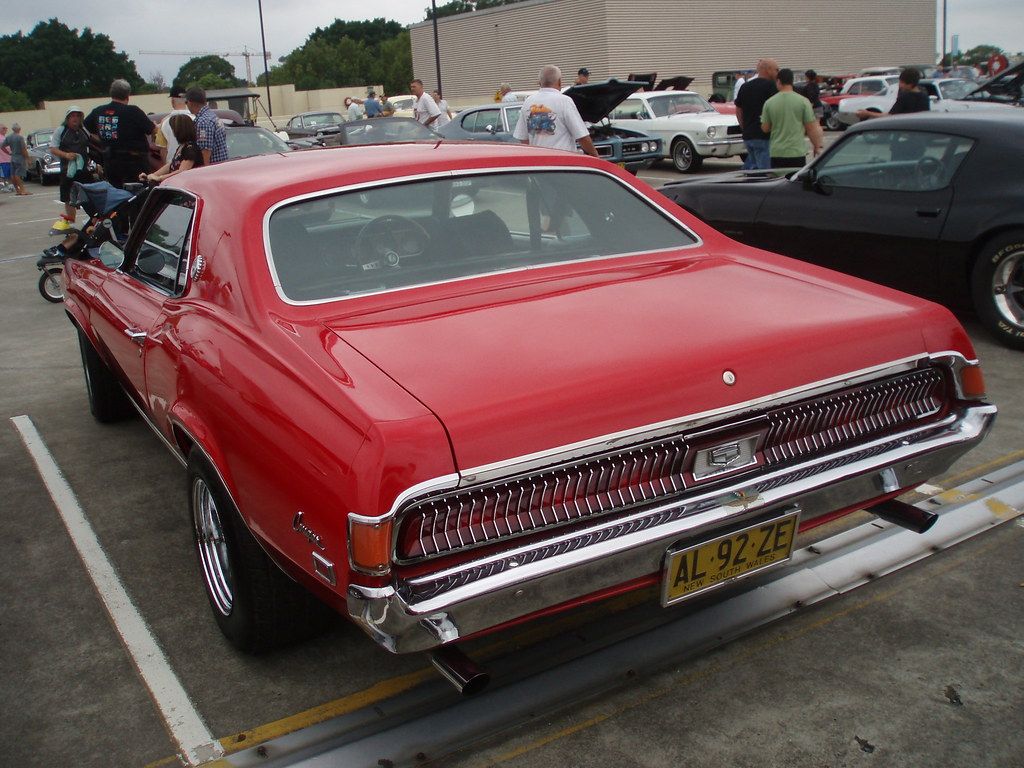
9. **Mercury Cougar Eliminator**When you think of muscle cars, Mercury might not be the first brand that springs to mind, but the Cougar Eliminator certainly made a compelling case for itself. This wasn’t just a fancy-dressed Mustang clone; it was a seriously potent machine, serving as a classy cousin to Ford’s pony car legend, yet packing an undeniable punch with a chip firmly on its shoulder.
The Eliminator trim elevated the Cougar into true performance territory, offering formidable engine options like the Boss 302 and the mighty 428 Cobra Jet. These powerplants ensured that the Cougar Eliminator had the muscle to back up its aggressive, yet refined, looks. It could certainly hold its own on the street, leaving many to wonder why it didn’t grab more of the spotlight.
Sadly, the Mercury brand itself faced an uphill battle, often seen as a softer, more luxurious extension of Ford. This perception, combined with Mercury’s mid-tier positioning and a less aggressive marketing push compared to its competitors, meant that the Eliminator struggled to truly capture the public’s imagination. It remained in the shadows, despite its impressive capabilities.
Ultimately, the Mercury brand faded from the scene, and with it, the chance for cars like the Cougar Eliminator to get the recognition they truly deserved. It’s a prime example of a fantastic performance car that, through a mix of branding challenges and unfortunate timing, became a lesser-known, albeit powerful, entry in the expansive muscle car narrative. For those in the know, however, its understated power is exactly what makes it so special.
Car Model Information: 2021 Volkswagen Tiguan 2.0T SE R-Line Black
Name: Mercury Cougar
Caption: 1969 Mercury Cougar (first generation)
Manufacturer: Mercury (automobile)
Layout: Front-engine, rear-wheel-drive layout
ModelYears: 1967–1997,1999–2002
Class: Pony car,Personal luxury car,Mid-size car,Sport compact
Categories: 1960s cars, 1970s cars, 1980s cars, 1990s cars, 2000s cars
Summary: The Mercury Cougar is a series of automobiles that was sold by Mercury from 1967 to 2002. The model line is a diverse series of vehicles; though the Cougar nameplate is most commonly associated with two-door coupes, at various stages in its production, the model also was offered as a convertible and a hatchback. During its production as the mid-size Mercury line, the Cougar was also offered as a four-door sedan and five-door station wagon.
In production for 34 years across eight generations (skipping the 1998 model year), the Cougar is second only to the Grand Marquis (36 years) in the Mercury line for production longevity. 2,972,784 examples were produced, making it the highest-selling Mercury vehicle. During the 1970s and 1980s, the marketing of the Mercury division was closely associated with the Cougar, with promotional materials advertising Mercury dealers as “The Sign of the Cat” with big cats atop Lincoln-Mercury dealer signs. Cat-related nameplates were adopted by other Mercury lines, including the Bobcat and Lynx.
During its production, the Cougar was assembled at the Dearborn Assembly Plant (part of the Ford River Rouge Complex) in Dearborn, Michigan from 1967 until 1973, San Jose Assembly (Milpitas, California) from 1968 into early 1969, Lorain Assembly (Lorain, Ohio) from 1974 until 1997, and at Flat Rock Assembly (Flat Rock, Michigan) from 1999 through 2002.
Get more information about: Mercury Cougar
Buying a high-performing used car >>>
Brand: Mercury Model: Cougar Eliminator
Price: $16,773 Mileage: 68,625 mi.
Read more about: Unleashing Raw Power: 14 Legendary 1970s Muscle Cars Every Enthusiast Needs to Know
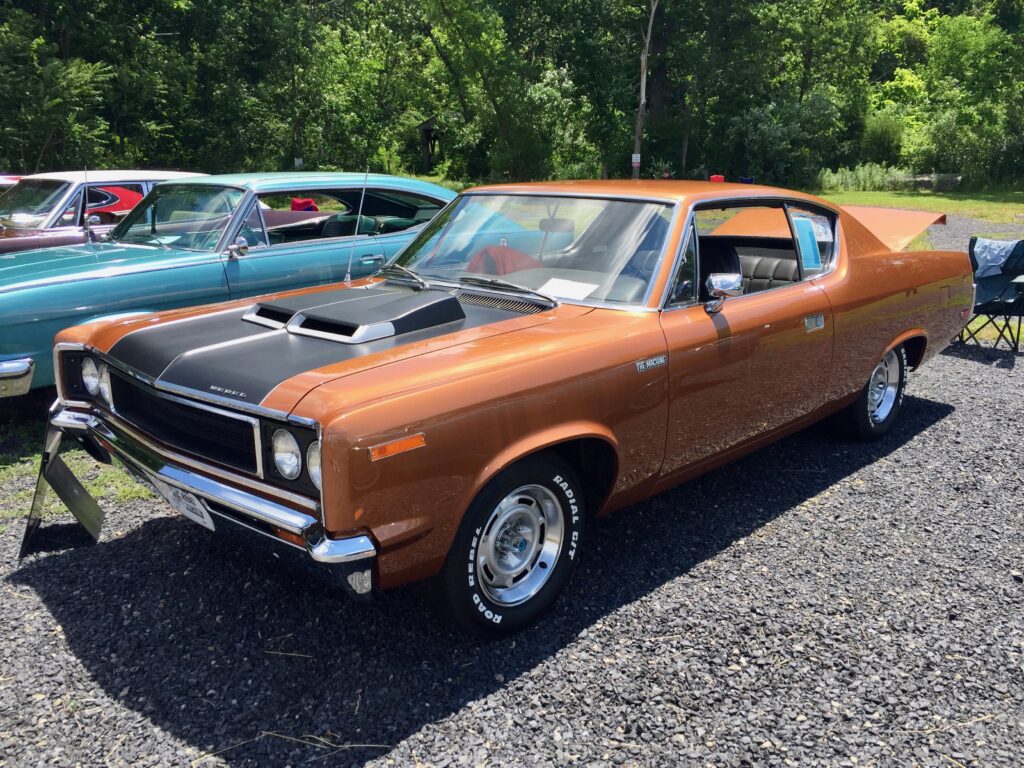
10. **AMC Rebel Machine**Prepare yourself for pure American lunacy, wrapped in a patriotic red, white, and blue paint scheme. The 1970 AMC Rebel Machine was a one-year-only riot, a brazen statement from a manufacturer that wasn’t afraid to push boundaries and make some serious noise. This car didn’t just arrive; it exploded onto the scene with an attitude that screamed “freedom and horsepower.”
Underneath those outrageous graphics and bold styling was a potent 390 V8 engine, ensuring the Rebel Machine wasn’t just for show. It looked, as some might say, like a parade float ready to hit the streets, but it certainly hit like a freight train once that V8 roared to life. This was unapologetic, in-your-face muscle, a true testament to the era’s anything-goes approach to performance.
However, its unique, almost bizarre, charm and capabilities weren’t enough to secure its long-term legacy. The Rebel Machine’s story is inextricably linked to the fate of its parent company. AMC, despite its innovative streaks, suffered from a smaller dealer network and a less established performance image compared to the automotive giants of the Big Three.
As AMC’s fortunes regrettably declined, the Rebel Machine, along with many of its siblings, slowly faded from memory. Today, it stands as a truly rare sight, a fascinating and often forgotten relic for muscle car enthusiasts who appreciate its distinctive character and audacious spirit. It’s a vivid reminder of a time when even the most unconventional machines commanded respect.
Car Model Information: 2021 Volkswagen Tiguan 2.0T SE R-Line Black
Caption: 1968 AMC Rebel 770 station wagon
Name: AMC Rebel
Aka: Australia,Mexico,Europe
Manufacturer: American Motors Corporation
Production: 1967–1970 (US market)
ModelYears: 1967–1970 (US market)
Assembly: Australia
Class: Mid-size car
BodyStyle: sedan (car),convertible,hardtop,4-door sedan,station wagon
Engine: 232 CID
Abbr: on approx.
Transmission: Manual transmission,Overdrive (mechanics),4-speed manual floor or console,Automatic transmission,3-speed “Shift-Command” on console
Layout: Front-engine, rear-wheel drive layout
Wheelbase: 114 in
Length: {{convert,197,in,mm,0,abbr=on
Width: 77.29 in
Height: 53.5 in
Weight: 3500 lb
Platform: AMC’s “senior cars”
Predecessor: Rambler Classic
Successor: AMC Matador
Related: AMC Ambassador
Categories: 1970s cars, AMC vehicles, All articles with dead external links, Articles with dead external links from July 2023, Articles with permanently dead external links
Summary: The AMC Rebel (known as the Rambler Rebel in 1967) is a midsized car produced by American Motors Corporation (AMC) from the 1967 until the 1970 model year. It replaced the Rambler Classic. A similar AMC Matador line replaced the Rebel models, starting with the 1971 model year.
The Rebel was positioned as the high-volume seller in the independent automaker’s line of models. The Rebel was also available in several specialty models, including station wagons featuring themed trim and luxury equipment offered only in selected geographical regions. A high-performance, low-priced muscle car version was produced in 1970, the Machine, which is most recognized in its flamboyant white, red, and blue trim.
The Rebel is the shorter-wheelbase, intermediate-sized version of the longer-wheelbase, full-sized Ambassador line.
The Rebel was built at AMC’s West Assembly Line (along with the Ambassador) in Kenosha, Wisconsin, and in Brampton, Ontario, Canada (Bramalea – Brampton Assembly Plant).
The Rebel was also assembled from Complete Knock-down (CKD) kits under license in Europe (by Renault in 1967), in Mexico (by Vehiculos Automotores Mexicanos), in Costa Rica by Purdy Motor; and from Semi Knockdown kits (SKD) in Australia (by Australian Motor Industries), and in New Zealand (by Campbell Motor Industries). Although the Rambler name was discontinued on the Rebel in the U.S. and Canadian markets after the 1967 model year, the cars continued to be sold in international markets under the historic “Rambler” brand.
Get more information about: AMC Rebel
Buying a high-performing used car >>>
Brand: AMC Model: Rebel Machine
Price: $16,773 Mileage: 68,625 mi.
Read more about: Unleashing Raw Power: 14 Legendary 1970s Muscle Cars Every Enthusiast Needs to Know

11. **Dodge Magnum GT**Before the Charger staked its claim as Dodge’s dominant muscle nameplate, the Magnum GT held its own as a formidable muscle cruiser. This was a car that didn’t shy away from making a grand entrance, boasting a big, brawny presence and an air of NASCAR swagger that was hard to ignore. It was designed for those who appreciated power with a touch of sophistication.
Available with up to a monstrous 440-cubic-inch engine, the Magnum GT had the sheer displacement to back up its aggressive looks, delivering the kind of raw power that defined the muscle car era. It offered a blend of performance and comfort, embodying a different facet of Dodge’s approach to high-performance vehicles, one that leaned into the idea of a powerful, long-distance cruiser.
Despite its impressive attributes, the Magnum GT unfortunately found itself struggling for relevance, becoming somewhat lost in the “malaise era” of automotive design. This period, marked by increasing regulations and a general toning down of performance, often saw once-mighty cars get watered down. The Magnum was also overshadowed by newer Mopars that would come to define the brand’s future.
Its styling, while distinctive, may not have resonated as strongly with buyers seeking the flashier aesthetics of some of its contemporaries. Consequently, the Dodge Magnum GT quietly slipped into obscurity, becoming one of the less celebrated, though undeniably powerful, models of its time. It’s a compelling piece of Dodge history that simply didn’t get the prolonged spotlight it deserved.
Car Model Information: 2021 Volkswagen Tiguan 2.0T SE R-Line Black
Name: Dodge Magnum
Caption: 2008 Dodge Magnum SE, Stone White
Production: 1978–1979, 1979–1981,1981–1988, 2005–2008,
ModelYears: 1978–1979,1979–1981,1981–1988,2005–2008
Manufacturer: Chrysler Corporation
Categories: 1980s cars, 2000s cars, All articles with unsourced statements, Articles with short description, Articles with unsourced statements from August 2025
Summary: The Dodge Magnum is a nameplate used by several Dodge vehicles, at different times and on various markets. The name was first applied to a large Chrysler B platform-based 2-door coupe marketed from 1978 to 1979 sold in the United States and Canada. From the 2005 to the 2008 model years, the nameplate was revived for a Charger-based station wagon on the rear-wheel drive Chrysler LX platform, produced in Canada and sold on the American and Canadian market.
In Brazil, the Magnum was a top-of-the-line version of the local Dodge Dart, produced from 1979 to 1981.
In Mexico, the Dodge Magnum was a sporty rear-wheel drive two-door car based on Chrysler’s M-body (American Dodge Diplomat/Plymouth Gran Fury). From 1983 to 1988 Dodge marketed a sporty two-door K-car as the “Magnum”, with an available turbocharger engine from 1984 on.
Get more information about: Dodge Magnum
Buying a high-performing used car >>>
Brand: Dodge Model: Magnum GT
Price: $16,773 Mileage: 68,625 mi.
Read more about: Unleashing the Legends: The 15 Most Valuable 1970s Cars Commanding Top Dollar Today
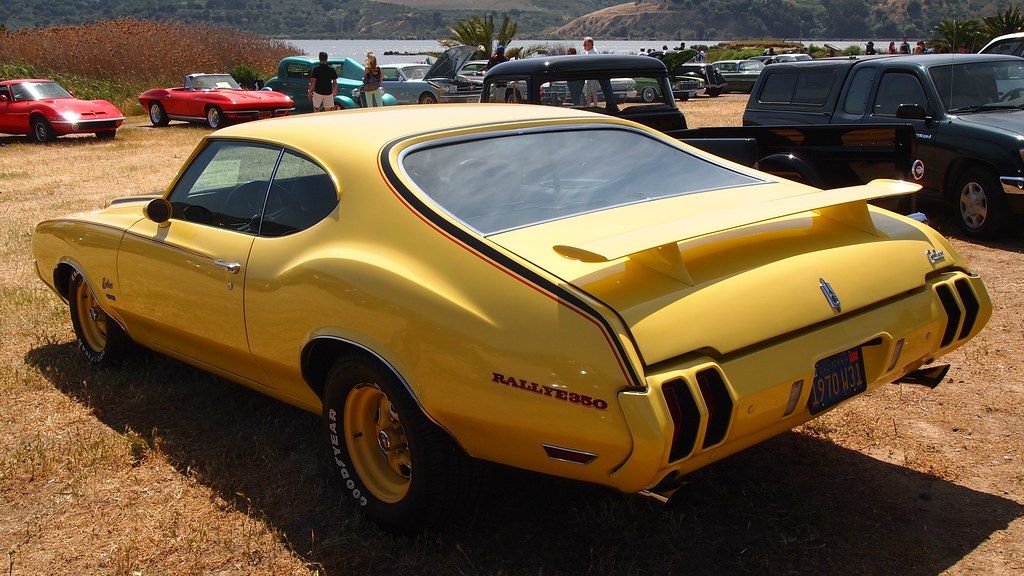
12. **Oldsmobile Rallye 350**If you wanted to stand out in the muscle car crowd without breaking the bank on a big-block monster, the Oldsmobile Rallye 350 was your vibrant, unapologetic answer. This car was a pure burst of energy in vivid yellow paint, delivering big noise and absolutely zero chill. It was designed to be flashy, affordable muscle, proving that you didn’t need the largest engine to make a powerful statement.
Underneath that eye-catching exterior was a respectable 310 horsepower small-block engine. This wasn’t the fastest Olds ever produced, but it offered a fantastic balance of performance and accessibility, making it a favorite for those who appreciated a unique look and spirited driving without the prohibitive costs associated with some of its more potent rivals.
Unfortunately, the Rallye 350’s tenure was remarkably short-lived, lasting only a single model year. Its brief existence meant it didn’t have the time to truly embed itself into the automotive consciousness, contributing to its eventual fade from widespread memory. It was a shooting star in the muscle car firmament, brilliant but fleeting.
Furthermore, Oldsmobile’s traditional image as a more conservative, almost luxurious, brand may have inadvertently hampered the Rallye 350’s ability to stand out among the more rebellious and hardcore muscle cars of the era. Despite its unique charm and genuine performance, it struggled to achieve the same level of enduring fame and celebration as some of its more aggressively marketed GM counterparts.
Car Model Information: 2021 Volkswagen Tiguan 2.0T SE R-Line Black
Caption: 1971 Oldsmobile Cutlass Supreme Convertible
Name: Oldsmobile Cutlass
Manufacturer: Oldsmobile
Production: 1961–1999
Successor: Oldsmobile Intrigue
Class: Compact car
Categories: 1970s cars, 1980s cars, 1990s cars, All Wikipedia articles needing clarification, All articles that may contain original research
Summary: The Oldsmobile Cutlass was a series of automobiles produced by General Motors’ Oldsmobile division between 1961 and 1999. At its introduction, the Cutlass was Oldsmobile’s entry-level model; it began as a unibody compact car, but saw its greatest success as a body-on-frame intermediate. The Cutlass was named after Vought F7U Cutlass, as well as the type of sword, which was common during the Age of Sail.
Introduced as the top trim level in Oldsmobile’s compact F-85 Series, the Cutlass evolved into a distinct series of its own, spawning numerous variants. These included the 4-4-2 muscle car in 1964, the upscale Cutlass Supreme in 1966, the high-performance Hurst/Olds in 1968, and the Vista Cruiser station wagon.
By the 1980s, Oldsmobile was using the Cutlass as a sub-marque, with numerous vehicle lines bearing the name simultaneously. The compact Cutlass Calais, midsize Cutlass Ciera, Cutlass Cruiser station wagon, and flagship midsize Cutlass Supreme were among the models available during this time.
In the 1990s, Oldsmobile began moving away from its traditional model lines, with other legacy vehicle nameplates like the 98 and 88 being discontinued in 1996 and 1999, respectively. The Cutlass name was likewise retired in 1999 in favor of the all-new Oldsmobile Alero, ending nearly 40 years of continuous Cutlass production.
Get more information about: Oldsmobile Cutlass
Buying a high-performing used car >>>
Brand: Oldsmobile Model: Rallye 350
Price: $16,773 Mileage: 68,625 mi.
Read more about: 14 Untamed 1970 Muscle Cars That Still Roar and Resonate Today: A MotorTrend Deep Dive
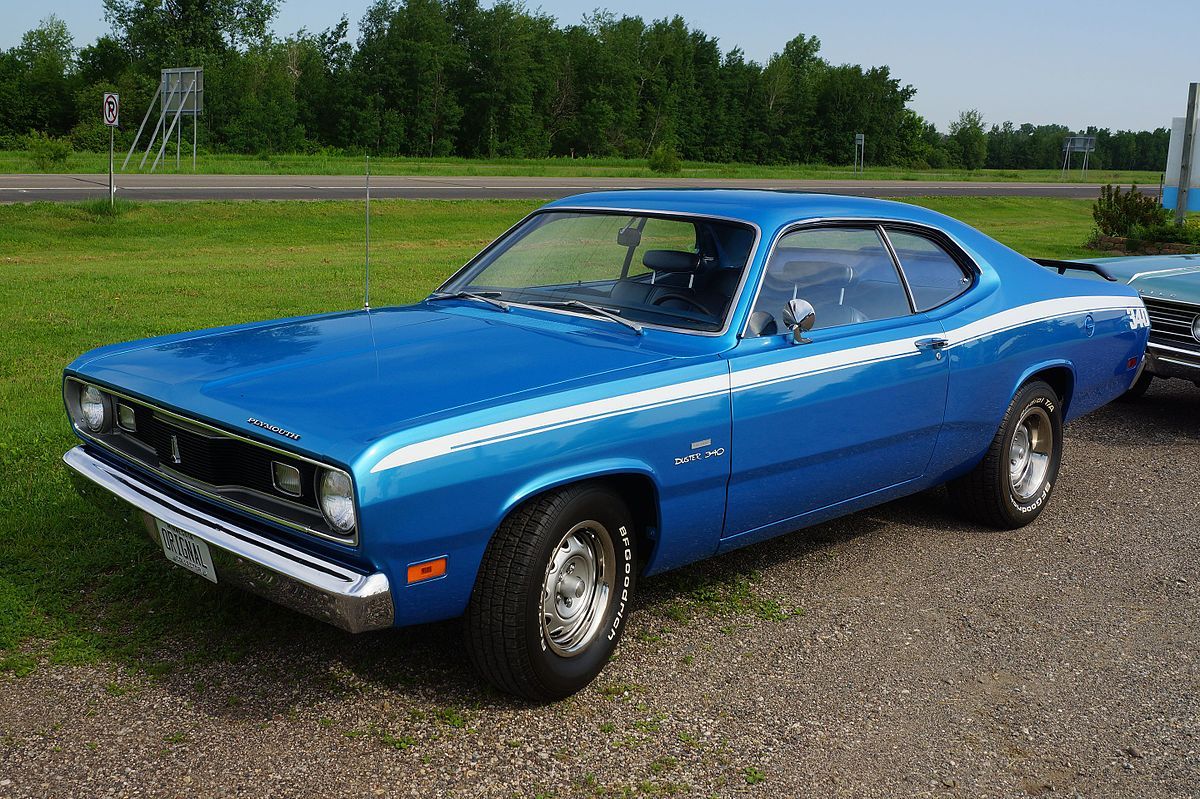
13. **Plymouth Duster 340**When it came to efficient, no-nonsense performance, the Plymouth Duster 340 was a true unsung hero, embodying the spirit of a lean, mean, and plenty quick muscle car. This compact powerhouse was a master of understatement, utilizing its featherweight size and a punchy small-block engine to become a street sleeper that didn’t need flashy adornments to prove its speed. It was all about raw, usable performance.
The Duster 340 was powered by a potent 340-cubic-inch V8, which, in its lighter chassis, delivered impressive acceleration and a genuinely thrilling driving experience. It represented a more budget-friendly approach to muscle car ownership, offering serious thrills without the premium price tag or the massive fuel consumption of larger big-block models.
However, its compact roots and Plymouth’s eventual demise were significant factors in why this capable machine became so easy to overlook over time. It was often perceived as a more practical, budget-oriented alternative to its more prestigious and visually aggressive stablemates, which, while true, also meant it lacked some of the allure of the flashier models.
Its interior, often described as basic, and a general lack of luxury features meant it appealed less to buyers who sought more than just pure speed. As the muscle car era itself wound down, the Duster 340, despite its genuine merits, quietly faded away, securing its place as a lesser-known, yet incredibly capable, chapter in muscle car history. It’s a testament to substance over superficiality.
Car Model Information: 2021 Volkswagen Tiguan 2.0T SE R-Line Black
Name: Plymouth Duster
Caption: 1970 Plymouth Duster 340
Manufacturer: Plymouth (automobile)
Production: 1969–1976
ModelYears: 1970–1976
Assembly: Hamtramck, Michigan,Commerce, California,Fenton, Missouri,Windsor, Ontario
Designer: Milt Antonick and Neil Walling
Class: Compact car
BodyStyle: coupe
Layout: Front-engine, rear-wheel-drive layout
Platform: Chrysler A platform
Related: Plymouth Valiant,Dodge Dart
Engine: {{convert,198,cuin,L,1,abbr=on,Chrysler Slant 6 engine,Straight-six engine
Abbr: on
Transmission: manual transmission,4-speed manual,TorqueFlite
Wheelbase: 108.0 in
Predecessor: Plymouth Barracuda
Successor: Plymouth Volare,Plymouth Gran Fury
Categories: 1970s cars, All Wikipedia articles needing clarification, All articles with dead YouTube links, Articles with dead YouTube links from February 2022, Articles with short description
Summary: The original Plymouth Duster is a semi-fastback two-door coupe version of the compact-sized Plymouth Valiant automobile that was marketed by Plymouth in the U.S. from 1970 until 1976 model years.
Get more information about: Plymouth Duster
Buying a high-performing used car >>>
Brand: Plymouth Model: Duster 340
Price: $16,773 Mileage: 68,625 mi.
Read more about: Rev Up Your Portfolio: 14 Classic Muscle Cars Middle-Class Enthusiasts Can Afford for Unrivaled Fun and Smart Investment
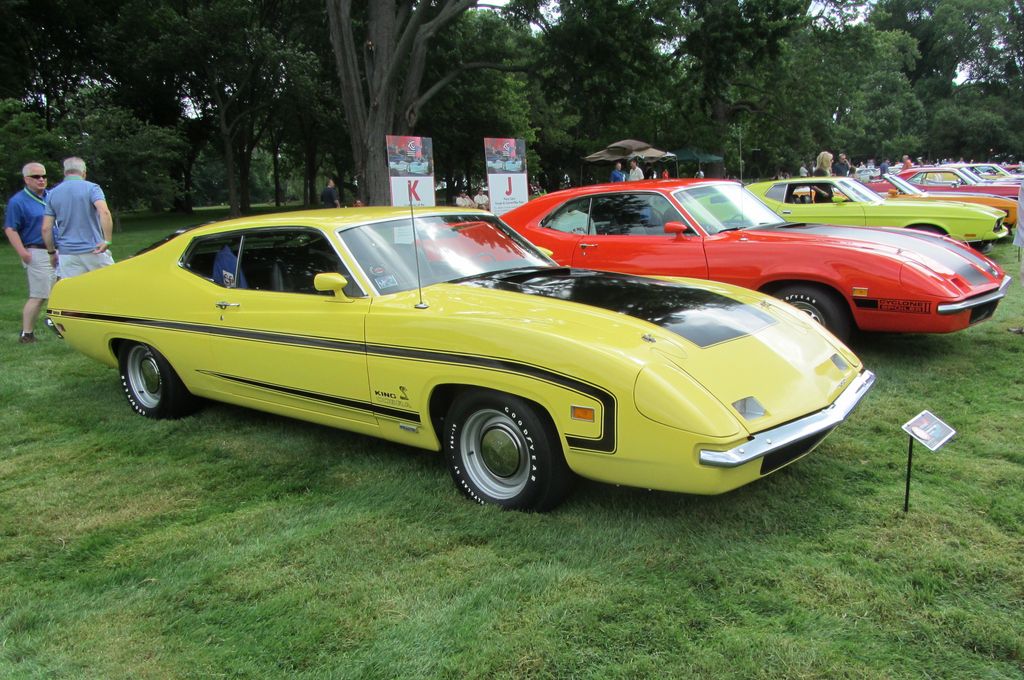
14. **Ford Torino Cobra**If you were looking for big displacement and an even bigger attitude from the Blue Oval, the Ford Torino Cobra was a formidable contender that proudly wore its dragstrip special badge. This was a car engineered for one purpose: quarter-mile dominance, and it certainly delivered, packing a colossal 429 cubic inches of unadulterated fury into its long, aggressive body.
The Torino Cobra wasn’t just a pretty face; it was a serious performer, designed to leave its mark on the asphalt. Its powerful engine options and robust chassis made it a genuine force to be reckoned with at the strip, capturing the essence of Ford’s commitment to raw, straight-line speed during the golden age of muscle.
Despite its undeniable prowess and aggressive styling, the Ford Torino Cobra remains somewhat of a forgotten chapter in the annals of muscle car history. Its sheer size, while imposing, may have made it less appealing to collectors who often favor smaller, more agile performance cars. Moreover, its relatively rare production numbers meant it never achieved the widespread mainstream fame of models like the Mustang.
The broader Torino line, despite its moments in NASCAR glory, never quite resonated with the hardcore muscle car crowd in the same way. As other Ford models commanded the spotlight, the Torino Cobra, a powerful and aggressive machine in its own right, gradually faded into obscurity, a mighty beast that the industry, regrettably, seemed to forget.
Car Model Information: 2021 Volkswagen Tiguan 2.0T SE R-Line Black
Aka: Ford Fairlane (Venezuela)
Name: Ford Torino
Caption: 1970 Ford Torino Cobra SportsRoof
Manufacturer: Ford Motor Company
Production: 1968–1976
Class: Mid-size car,muscle car
Layout: FR layout
Related: Mercury Montego
Assembly: ubl
Predecessor: Ford Fairlane (Americas)
Successor: Ford LTD II
Categories: 1960s cars, 1970s cars, All Wikipedia articles written in American English, All articles with vague or ambiguous time, Articles with short description
Summary: The Ford Torino is an automobile that was produced by Ford for the North American market between 1968 and 1976. It was a competitor in the intermediate market segment and essentially a twin to the Mercury Montego line.
Just as the Ford LTD had been the upscale version of the Ford Galaxie, the Torino was initially an upscale variation of the intermediate-sized Ford Fairlane. In the 1968 and 1969 model years, the intermediate Ford line consisted of lower-trim Fairlanes and its subseries, the upper-trim Torino models. In 1970, Torino became the primary name for Ford’s intermediate, and the Fairlane was now a subseries of the Torino. In 1971, the Fairlane name was dropped altogether, and all Ford intermediates were called Torino.
Most Torinos were conventional cars, and generally the most popular models were the four-door sedans and two-door hardtops. However, Ford produced some high-performance “muscle car” versions of the Torino by fitting them with large powerful engines, such as the 428 cu in (7.0 L) and 429 cu in (7.0 L) “Cobra-Jet” engines. Ford also chose the Torino as the base for its NASCAR entrants, and it has a successful racing heritage.
Get more information about: Ford Torino
Buying a high-performing used car >>>
Brand: Ford Model: Torino Cobra
Price: $16,773 Mileage: 68,625 mi.
Read more about: Unleashing Raw Power: 14 Legendary 1970s Muscle Cars Every Enthusiast Needs to Know
And so, we arrive at the end of our journey, a poignant reminder that the golden era of muscle was never solely about the sheer horsepower or the fastest quarter-mile times. It was, at its very core, an intoxicating blend of swagger, audacity, and an unbridled spirit that permeated every aspect of these machines. Big engines roared, bold looks commanded attention, and the noise—oh, the glorious noise—was a symphony of freedom. These vehicles, whether they fit every purist’s stringent definition or not, embodied the beating heart of what muscle cars truly meant: raw, thrilling, and unmistakably American fun. In an age of silent motors and simulated sensations, we often yearn for that visceral connection, for the pure, unadulterated drama of revs, rubber, and rear-wheel drive. Maybe, just maybe, it’s time we convinced the manufacturers to bring it all back.



